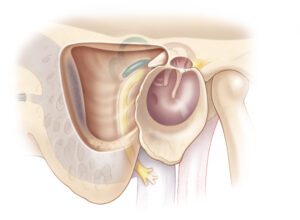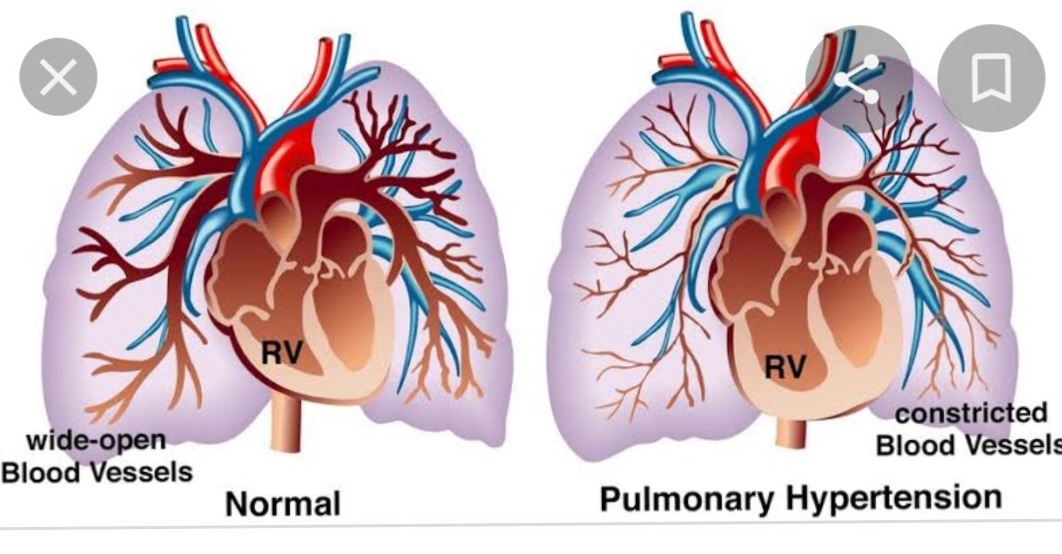Radical mastoid surgery-various aspects-
A radical mastoidectomy is a surgical operation that eliminates the affected mastoid air cells, structures of the middle ear, and at times the ear canal. It is a variant of mastoidectomy that is employed to address severe or recurring ear conditions.
- What it’s utilized for
- When the ear canal cannot be repaired
- When the illness has infiltrated the middle ear
- When alternative treatments have proven ineffective
- To resolve intracranial complications arising from otitis media


If any patient of ENT requires any surgery, opd consultation or online consultation in clinic of ENT specialist Doctor Dr Sagar Rajkuwar ,he may contact him at the following address-
Prabha ENT clinic, plot no 345,Saigram colony, opposite Indoline furniture Ambad link road, Ambad ,1 km from Pathardi phata Nashik ,422010, Maharashtra, India-Dr Sagar Rajkuwar (MS-ENT), Cell no- 7387590194 , 9892596635
Issued in public interest by –
What it consists of
- Excising the structures of the middle ear, including the ossicles and tympanic membrane
- Merging the ear canal and mastoid bone into one cavity
- Widening the entrance of the ear canal
- Sealing the eustachian tube with soft tissue
- Potential complications
- Hearing impairment
- Damage to the facial nerve
- Dizziness or vertigo
- Alterations in taste
- Brain abscess
- Leakage of cerebrospinal fluid
Recovery
- You may have dressings and sutures on your ear
- You may experience a headache, discomfort, or numbness
- Your physician might provide prescriptions for pain relief or antibiotics
The aim of the radical procedure is to transform the external auditory canal, the middle ear, the attic, the antrum, and the mastoid into one interconnected open cavity. To achieve this, the mastoid antrum is accessed, the posterior wall of the bony canal that divides the middle ear from the mastoid is taken out, along with the malleus, incus, and tympanic membrane, and subsequently the diseased granulations are eliminated, merging these areas into a single cavity. The incision behind the ear is entirely sutured closed, and the postoperative care is administered through a widened membranous external auditory meatus. The radical cavity is maintained and cleaned daily until it is dry and fully dermatized.
The close connection of the middle ear and mastoid with the facial nerve, internal ear, jugular bulb, and other intracranial structures necessitates that the surgeon possesses practical knowledge of the surgical anatomy relevant to this procedure. Its success will then rely on meticulous and precise execution of the various stages involved in its technique.
THE STEPS OF THE RADICAL OPERATION
- The stages that constitute the technique of the radical operation are detailed as follows:
- The mastoid incision and exposure of the cortex
- Access to the mastoid antrum
- Removal of the posterior wall of the bony canal
- Extraction of debris from the middle ear
- Initial lowering of the facial ridge
- Elimination of the external attic wall
- Removal of the tympanic annulus
- Curettage of the Eustachian tube
- Final reduction of the facial ridge and exenteration of the hypotympanic space
- Lowering of the floor and the anterior wall of the canal
- Examination of the radical cavity
- Trimming of the flap
- Closure of the wound
Mastoidectomy is a term that some of you may recognize. It refers to a surgical operation aimed at removing a portion or the entirety of the mastoid bone. The mastoid bone is a component of the temporal bone located behind the ear. This bone plays a crucial role within the inner ear. Although it is referred to as a bone, its structure is more similar to that of a sponge than the rigid nature of other bones. Mastoidectomy is generally conducted to treat a variety of ear and skull base issues, primarily to combat infections, enhance drainage, or excise tumors.

What is a Modified Radical Mastoidectomy?
Modified radical Mastoidectomy (MRM) is a surgical operation performed for specific ear issues, such as chronic ear infections, cholesteatoma (an abnormal proliferation of skin cells in the middle ear or mastoid area), or other conditions that impact the ear and adjacent structures. Compared to a traditional radical mastoidectomy, it is a more conservative approach. The aim of the procedure is to eliminate any infected or impaired tissue, enhance drainage, preserve the ear canal, and protect hearing. Continue reading for further information.


When is a Modified Radical Mastoidectomy Recommended?
A Modified Radical Mastoidectomy is suggested in the following scenarios:
- Chronic Ear Infections: It is advised for chronic ear infections that do not respond to conventional treatments and risk causing complications such as damage to ear structures.
- Cholesteatoma: This condition involves an abnormal proliferation of skin cells in the middle ear. It can deteriorate the underlying bone and progressively result in hearing loss.
- Limited Disease Involvement: When the disease or disorder is confined to a specific area involving the mastoid bone, extensive repair will not be necessary.
- Certain Pathological Conditions: In situations where the patient has distinctive pathological conditions best managed with a more conservative surgical method.
It is crucial to understand that the suggestion for a Modified Radical Mastoidectomy is determined individually, based on the specific requirements of the patient and the severity of the illness. The primary objective of the procedure is to eradicate damaged tissues, enhance drainage, and maintain hearing.
For update on further important health related topics and frequently asked questions on health topics by general population please click on the link given below to join our WhatsApp group –
https://chat.whatsapp.com/Lv3NbcguOBS5ow6X9DpMMA
Issued in public interest by –
How to Prepare for a Modified Radical Mastoidectomy?
Adequate preparation prior to the surgery is essential for achieving a favorable outcome. Here are some general recommendations.
A comprehensive evaluation will be performed by your surgeon who will examine your ears and provide a detailed explanation of the procedure.
The ENT(EAR NOSE THROAT) SURGEON will review your medical history and any existing allergies. Additionally, inform them about your current medications and supplements, if applicable.
You might need to adjust the dosage or even stop certain medications, such as blood thinners, for a short time before and after the surgery.
You will be advised to stop smoking and refrain from using alcohol, as they can hinder the healing process and elevate the chances of complications.
The surgeon will give detailed fasting guidelines for the day prior to the surgery. Ensure that you adhere to them carefully.
Be sure to arrange for assistance to drive you home during your recovery period. Additionally, get your home ready to be a comfortable environment for you to rest.
Keep in mind to communicate transparently with your healthcare team, pose any questions you might have, and follow their instructions closely to ensure a safe and effective procedure.
How is Modified Radical Mastoidectomy Performed?
The procedure includes the following steps:
- Anesthesia: The procedure is carried out using local anesthesia with sedation or general anesthesia.
- Positioning: You will be positioned either on your back or your side, depending on the surgeon’s preference and the specifics of your situation.
- Surgical Approach: The surgeon makes an incision behind or around the ear to gain access to the mastoid bone and the ear canal. The size and location of the incision may differ based on the individual situation. The surgeon may utilize a microscope or an endoscope to obtain a clear view of the surgical area.
- Removal of Diseased Tissue: The surgeon carefully extracts the infected or damaged tissue from the middle ear and mastoid region.
- Reconstruction: If necessary, the surgeon may reconstruct certain ear structures using grafts or prosthetic materials to restore function and enhance hearing. In some instances, a new eardrum (tympanic membrane) may be created to replace a damaged one.
- Drainage and Ventilation: The surgeon may establish a ventilation tube or insert a drainage tube to promote airflow and fluid drainage.
- Closure: After completing the procedure, the surgeon will close the incision with sutures or staples.
Once the procedure is finished, you will be moved to a recovery room where you will be monitored until you are stable. Your vital signs will be checked, and you will be observed for any immediate postoperative complications.
What to Expect After the Procedure?
Most patients are discharged on the same day or after one or two days.
Some level of pain and discomfort is typical following the procedure, which can be alleviated with prescription pain medications.
- Your surgeon will give specific guidance on how to care for your ear after the surgery. This may involve keeping the ear dry, avoiding water exposure, and using ear drops as instructed.
- Do not put anything into your ear canal, such as cotton swabs, without your surgeon’s consent.
- You will be advised to refrain from strenuous activities during the initial days. You will need to take some time off from work, which will depend on the nature of your job.
- Ensure that you attend the follow-up appointments arranged by your doctor to assess the healing progress.
- Your doctor will provide clear guidance on when you can resume normal activities. It is essential to closely adhere to your surgeon’s postoperative instructions and maintain open communication with your healthcare team.
Benefits and Risks Associated with the Procedure
Here are some benefits and risks associated with the procedure.
Benefits
- Highly efficient in treating ear infections
- Maintains or enhances hearing
- Enhances your quality of life
Risks
- Possibilities of infection, bleeding, or equilibrium problems
- Temporary or lasting alterations in hearing
- Damage to nearby structures such as the facial nerve
- Anesthesia risks such as respiratory difficulties
It is essential to understand that Modified Radical Mastoidectomy is a secure and effective operation. As with any procedure, there is a slight risk of complications, and Modified Radical Mastoidectomy might also involve some risks as noted above in rare instances.
The primary reason for undertaking the radical operation is to protect the patient’s life.
If there are no immediate severe complications, this operation can be considered for eliminating chronic, foul-smelling discharge that may be socially or economically troublesome for the patient, potentially hindering their ability to find employment. The fact that surgery is warranted in these cases is favorable, but it should not be overly emphasized if there are other more significant justifications for proceeding with the operation. As Ballance noted, “It is clear that there remains excessive reluctance in advocating surgery before the emergence of threatening symptoms. The disease itself is the basis for surgery, not the alarming symptoms of broader and deeper disease. The most genuinely conservative treatment is that which most effectively and swiftly cures the disease. ” The indications for performing the radical operation can be categorized into two primary groups. The first group includes the imperative indications, such as intracranial complications. Meningitis arising from chronic otitis media certainly serves as an indication for surgery. If surgery is conducted early during a period of potential meningitis (serous meningitis or meningismus), the likelihood of a favorable outcome is significantly greater than when full-blown meningitis is present. This latter complication almost always proves to be fatal.
When lateral sinus thrombosis occurs due to chronic otitis media, experience indicates that there is extensive bone destruction, typically affecting the tegmen antri or the tegmen tympani as well. The operation here acts as a preventive measure against further extension, potentially to the brain, as well as addressing the thrombophlebitis itself. If a brain abscess is present, it usually arises through direct extension. Consequently, the most logical method for sacral relief is through the radical operation, during which the fistulous tract will be revealed. Should a basal skull fracture involve the middle or inner ear in a patient suffering from chronic otitis media, immediate radical surgery is warranted as a fracture can pave the way for meningitis or purulent labyrinthitis.
When complicated irritation happens repeatedly during the progression of chronic otitis media, it typically signifies necrosis in the labyrinthine capsule, and most frequently at the horizontal canal. Either this or the indication of the presence of a labyrinthine content requires an essential recommendation for radical surgery to prevent the potential.
Is a mastoidectomy a major operation?
The amount of surgery required varies based on your specific circumstances. A simple mastoidectomy will cure illness in your mastoid without affecting any of the structures in your ear canal or middle ear.
A tympanomastoidectomy or canal-wall-up mastoidectomy involves the removal of more bone tissue than a simple mastoidectomy. In order for your surgeon to reach the middle-ear space behind your eardrum, which houses your ossicles—the three minute bones in your ear that conduct sound waves—this is done. This technique leaves the ear canal entirely intact.
When the illness has irreparably harmed your ear canal or when the entire removal of the disease necessitates the removal of your ear canal, a tympanomastoidectomy or a canal-wall-down mastoidectomy is performed. This surgery creates a large open area known as a mastoid bowl or mastoid cavity by fusing your ear canal and mastoid bone. To make it easier to clean your mastoid cavity in the future, the entrance of your ear canal is often widened. A radical or modified mastoidectomy is the term sometimes used to refer to this procedure, which is only used when the illness is severe or when it recurs after a less invasive operation.
What happens before a mastoidectomy?
You should strictly adhere to the list of preoperative recommendations that your healthcare provider will give you. It might be necessary to hold off on taking some medications for a little while in certain situations. Additionally, since a mastoidectomy is performed under general anesthesia, you will need to make arrangements for a reliable friend or family member to drive you to and from your surgery.
During a mastoidectomy, what occurs?
To make sure you are comfortable throughout the operation, you will be given general anesthesia. Following that, your surgeon will:
- In order to reach your mastoid bone, make an incision behind your ear. (To reduce the visibility of your mastoidectomy scar, your surgeon will make this incision with care.)
- To open your mastoid bone, use unique equipment.
- Get rid of the diseased air cells in your mastoid.
- Suturing the surgical site shut.
- Use gauze to dress the surgical wound.
It takes two to three hours on average to finish a mastoidectomy procedure.
How much pain does a mastoidectomy cause?
A mastoidectomy should not cause any pain; however, similar to any surgery, a mastoidectomy may cause some minor discomfort after the procedure. It is likely that the incision behind your ear will hurt, and you may feel as if your ear is blocked up or full. These side effects can be treated with over-the-counter (OTC) pain relievers like acetaminophen or ibuprofen. Additionally, your surgeon will provide you post-operative instructions that will help you stay comfortable throughout the healing process.
What happens after a mastoidectomy?
You will awaken in recovery following your mastoidectomy. Your medical team will keep an eye on your progress, and when you are ready, you will be allowed to return home. You will get precise instructions on what to do after surgery from your surgeon. These must be followed closely.
A mastoidectomy, sometimes referred to as mastoid surgery, is a procedure that entails removing unhealthy or aberrant tissue from the mastoid bone, which is found behind the ear. It is frequently used to treat ear infection problems, particularly cholesteatoma and chronic otitis media. The treatment can also be a component of additional treatments, such as cochlear implantation or middle ear access.
A closer examination of mastoid surgery is provided below:
What makes mastoid surgery necessary?
Ear infection complications include:
Complications of chronic otitis media include mastoiditis (infection of the mastoid bone) and cholesteatoma (a skin cyst that can harm the ear and skull).
Cholesteatoma:
Mastoidectomy is commonly performed to remove cholesteatoma, which may result in hearing loss, vertigo, and possibly severe consequences if not treated.
implantation of the cochlea:
The middle ear may need to be accessed for cochlear implantation, a surgery that restores hearing in individuals with severe to profound hearing loss.
Additional ear issues:
Additionally, a mastoidectomy can be used to treat additional illnesses, such as mastoiditis or chronic suppurative otitis media, or to get access to the middle ear for other treatments.
What procedures are involved in mastoid surgery?
Cut:
The mastoid bone is reached by the surgeon through a tiny cut behind the ear.
Open the mastoid.
To expose the air cells, the surgeon uses a bone drill and other surgical tools to open the mastoid bone.
Getting rid of contaminated cells:
From the mastoid bone, diseased or aberrant cells (such as cholesteatoma) are removed.
Closing:
The wound is bandaged after being sutured shut.
Possible dangers and consequences:
- Infection: There is a risk of infection, as with any surgery.
- Bleeding: Bleeding can occur during or after the procedure.
- Facial weakness: A rare occurrence is when the facial nerve is injured, resulting in transient or persistent paralysis.
- Vertigo and dizziness: These are typical post-operative adverse effects that might persist for several hours, but they can also be transient or linger for months.
- Changes in hearing: Following surgery, hearing may improve, stay the same, or get worse.
- Ringing in the ears (tinnitus): is a potential side effect of surgery.
Rehabilitation:
- Pain management: Drugs can be used to treat postoperative discomfort.
- Follow-up appointments: In order to monitor healing and ensure there are no issues, frequent follow-up appointments with the surgeon are necessary.
Price:
- According to Lybrate, the average cost of a mastoidectomy procedure in India ranges from ₹55,000 to ₹75,000.
Tympanoplasty is the surgical restoration of a ruptured or damaged eardrum (tympanic membrane). Its goal is to fix the hole and prevent additional issues such as infection or hearing loss in order to restore hearing. To repair the eardrum, the procedure may include using a graft from the patient’s own tissue, often from behind the ear.
A more comprehensive explanation is provided below:
What it is:
- A hole or rip in the eardrum is fixed surgically with tympanoplasty.
- The tympanic membrane, sometimes referred to as the eardrum, is a thin tissue that vibrates when sound waves hit it.
- Ear drainage, hearing loss, and other problems can result from a hole in the eardrum.
The explanation for this:
- To fix a broken eardrum that won’t heal on its own.
- If the hole is large or affects a particular region of the eardrum, it may be necessary to undergo surgery to enhance hearing.
- To avoid additional issues such as persistent ear infections or vertigo.
- Sometimes, it is performed in conjunction with other operations to treat similar issues in the middle ear.
Process:
- Although local anesthesia with sedation may be used, the procedure is usually carried out under general anesthesia.
- The cut is made either within the ear canal or behind the ear.
- The hole in the eardrum is repaired using a tissue graft, most often fascia tissue taken from the area behind the ear.
- To promote appropriate healing, the graft is carefully placed and supported.
- It may take up to two hours for the process to complete.
Advantages:
enhanced hearing, prevention of repeated ear infections, alleviation of persistent ear discharge, and lower chance of hearing loss.
Risks:
Facial nerve injury (albeit uncommon), a small chance of hearing loss, and graft failure.
Recovery:
- The length of the healing period depends on the individual and the severity of the surgery.
- The eardrum usually heals in a couple of weeks.
- Antibiotics or ear drops could be administered.
- To keep an eye on recovery and hearing, follow-up appointments with the surgeon are required.
Click on the link below to learn more about this disease.
FOR INFORMATION IN GREAT DETAIL ON Mastoid surgery recovery PL CLICK ON THE LINK GIVEN BELOW-It Is Always Better To View Links From Laptop/Desktop Rather Than Mobile Phone As They May Not Be Seen From Mobile Phone. In Case Of Technical Difficulties You Need To Copy Paste This Link In Google Search. In Case If You Are Viewing This Blog From Mobile Phone You Need To Click On The Three Dots On The Right Upper Corner Of Your Mobile Screen And ENABLE DESKTOP VERSION.
If any patient of ENT requires any surgery, opd consultation or online consultation in clinic of ENT specialist Doctor Dr Sagar Rajkuwar, he may contact him at the following address-
Prabha ENT clinic, plot no 345,Saigram colony, opposite Indoline furniture Ambad link road ,Ambad ,1 km from Pathardi phata Nashik ,422010 ,Maharashtra, India-Dr Sagar Rajkuwar (MS-ENT), Cell no- 7387590194 , 9892596635
Issued In Public Interest By –
www.entspecialistinnashik.com





